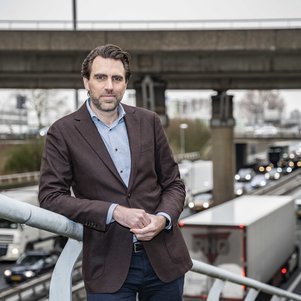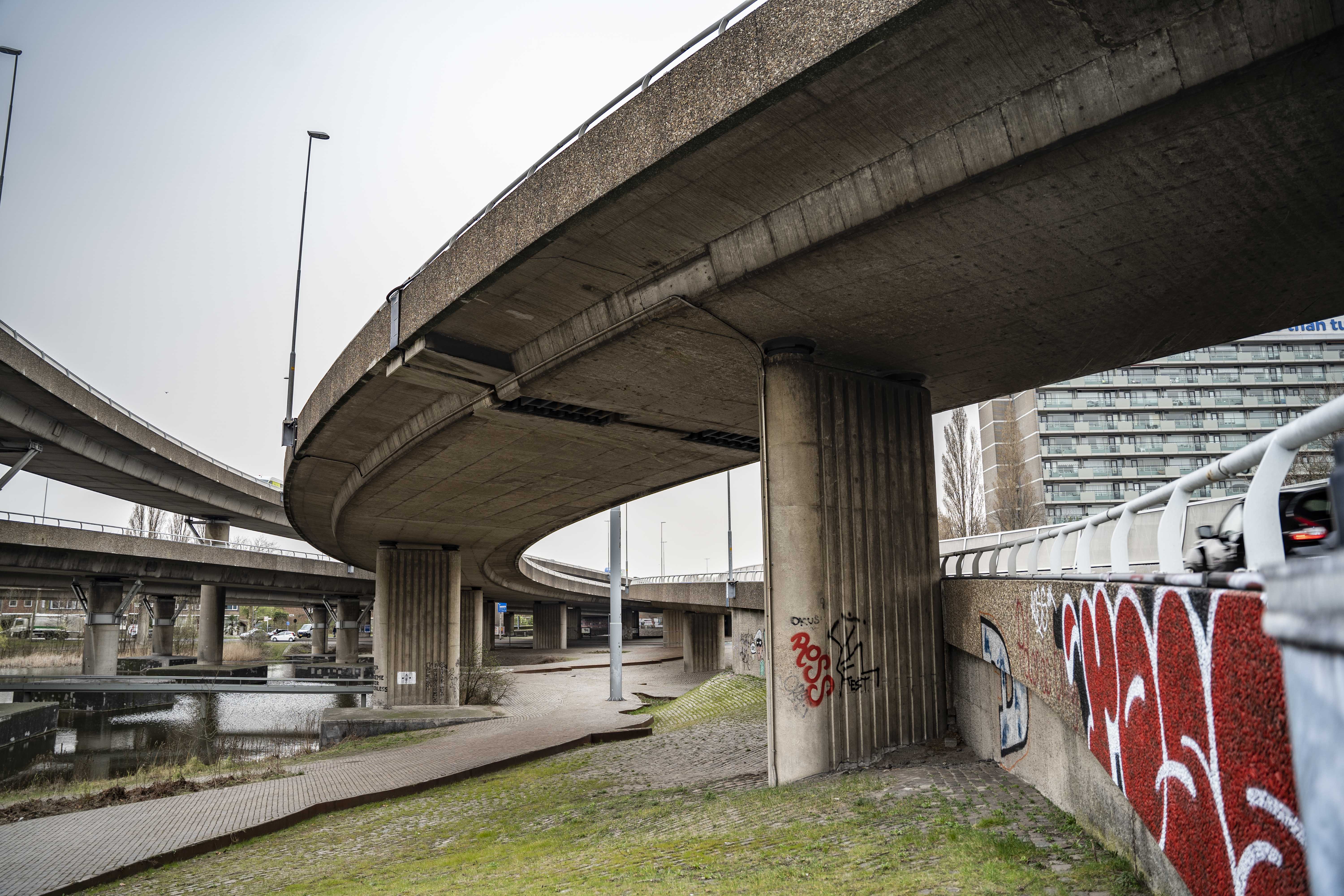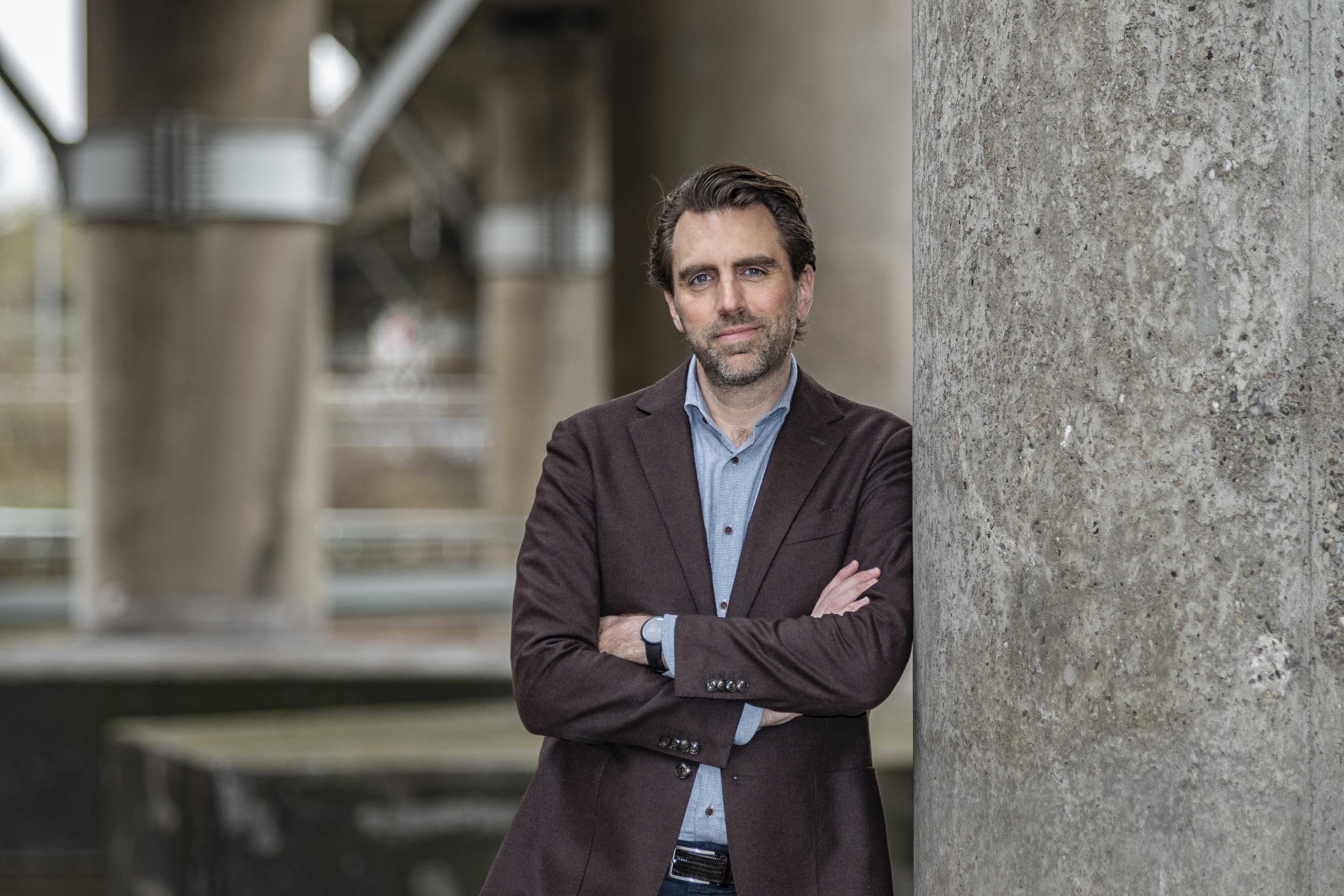Sustainable area development requires selection and cooperation
How can you create added value for the environment in area development while at the same time ensuring that the public-private cooperation runs smoothly? Researcher Tom Daamen brings together process and content in urban area design projects. For the redevelopment of the Rotterdam Ring Road he discovered – together with the parties involved – the most promising approaches for solutions while the project was still in the research phase.
Building a million houses, the energy transition, sustainable mobility, ensuring space for nature: designing the environment in the Netherlands confronts us with many tasks. Tasks that also need to be combined as well as possible. And that is not always easy, says Tom Daamen, Associate Professor of Urban Development Management. “It's not just integrating these matters in the design that is a tough challenge, but also good cooperation in the execution of the plans. Every party has its own goals and its own way of working.”
Connecting process and content
One of Daamen's tasks in his research domain of area development is to make a connection between process and content. “Making this connection really appeals to me. Initially my main interest was in architecture and urban development: designing buildings and areas. That's why I originally chose to study architecture. Now my main focus is on the surrounding organisation: how does a project get off the ground, how does the process work and how can you create good public-private cooperation? It really helps that I can put myself in the shoes of the various positions and interests.”

Dr. Tom Daamen
Struggle of local government bodies
One problem that Daamen encounters is that local government bodies find it hard to be a full partner in area development projects. “Municipalities in particular lack sufficient capacity. They have experienced severe cutbacks in the last ten years, yet they have a lot on their plate. For example, in projects they have to deal with all kinds of parties that want to have a say, but they are prohibited from showing preference for any party. They also have to ensure sufficient innovation, while the contracting parties often prefer to use existing solutions. And then everything also has to be affordable.”

Renovation of Rotterdam Ring Road
An important issue in urban design is accessibility. After all, without good infrastructure it is difficult for residents to travel from A to B and for the city to be connected to the rest of the country. Last year Daamen was involved in the planning surrounding the redevelopment of the Rotterdam Ring Road, a motorway in urgent need of renovation. “The most important question is how we can use public-private cooperation to improve the road, while also focusing on sustainable energy, housing and strengthening nature in the area. Connecting these tasks enables you to create more quality and added value for the area.”
Approaches for solutions during the research phase
The combination of assignments and the involvement of a large number of public and private partners (see box) made the project in Rotterdam potentially ripe for an integrated approach. In order to study the potential cooperation between parties, Daamen chose to use an action-oriented research method. “Normally you carry out a study and then write a report with recommendations. And that report often ends up in a drawer somewhere. To avoid that happening, we discussed our approaches for solutions for the project with the parties involved back in the study phase.”
Quicker picture of promising solutions
According to Daamen, this has the advantage that you can put the recommendations to the test and refine them right away, which gives you a quicker picture of why some solutions are promising and others aren't. “It often turns out that recommendations are not feasible or workable in practice, for example because they are too complex, or too expensive, or else they conflict with politics or regulations. Discussing your research findings in an early phase means you can prevent such blockages. For example, in Rotterdam we came up with three ways in which the Ring Road parties could achieve an optimum renovation. We will have to wait a few years to see which option has proved the best. But at least this approach was very well received by the parties involved.”

Learning from other projects
That public-private cooperation does not always go smoothly can be seen in the Spoorzone development in Delft, a project that began ten years ago. With such facilities as an urban park, waterways, housing, offices and a road over the railway tunnel, an area of high quality and value has now been created around Delft railway station. However, the public-private cooperation totally fell apart during the process. Daamen: “This was caused by poor agreements and unrealistic expectations. And the costs were far higher than what was budgeted. These are good lessons for future projects.”
No more AND-AND
Another thing that helps in public-private cooperation is to acknowledge as a government body that you can't always have an AND-AND result. “You can't direct everything AND come up with all the solutions AND pay for everything too. Government bodies need to look for new ways of generating money, for example by allowing joint investment by market parties. The government should also facilitate a good knowledge infrastructure, so that lessons learned and innovations can be made known and disseminated more quickly. One way to achieve this could be to work together with universities, as is happening now with Rotterdam.”
Don't integrate everything right away
When it comes to combining substantive tasks, Daamen feels it is important to be selective in the beginning. “If you try to integrate everything right away, you'll never succeed. Start out by bringing a small number of conditional tasks together, in the knowledge that you will have to integrate other tasks as the process continues. Start, for example, with housing and mobility. You can determine at a later stage what energy or nature-related solutions to use. A tricky point is that current legislation requires that plans must already be clear from A to Z beforehand. So legislation needs to move with the times too.”
The Rotterdam Ring Road project is a cooperation between various public and private parties, with the Ministry of Infrastructure and the Environment (the client), Rijkswaterstaat, the province of Zuid-Holland and the City of Rotterdam on the government side, and the construction firms, project developers, social housing associations and design agencies on the private side. TU Delft as a knowledge institution and the Deltametropolis Association are also involved in the project.
